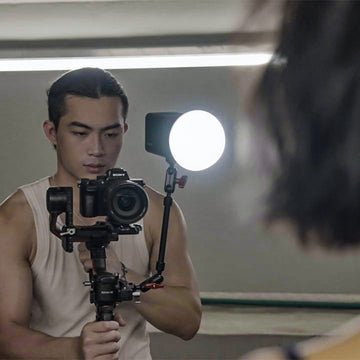Blog Information
- Publicado por : Sandoval Shinn
- Publicado en : Jun 09, 2024
- Puntos de vista : 171
- Categoría: Educación
- Descripción: Master the Art of Photography Lighting: Essential Tips and Techniques for Beginners
Visión de conjunto
- Photography Lighting
Photography lighting is a crucial aspect of capturing stunning images. Whether you're a beginner or an experienced photographer, understanding the fundamentals of lighting can significantly enhance the quality of your photos. In this article, we will explore essential tips and techniques to help you master the art of photography lighting.

Understanding Light Sources
Before delving into the techniques of photography lighting, it's important to understand the different sources of light. Natural light, such as sunlight and moonlight, can create beautiful and soft illumination for your photos. On the other hand, artificial light, including studio lights and flash units, provides more control over the intensity and direction of light. Mastering the use of both natural and artificial light sources is essential for creating captivating photographs.
Utilizing Light Modifiers
Light modifiers are tools that photographers use to manipulate and control the quality of light. Softboxes, umbrellas, and reflectors are common light modifiers that can soften harsh light, diffuse shadows, and enhance the overall lighting of a scene. By understanding how to effectively use light modifiers, photographers can achieve the desired mood and atmosphere in their images. Experimenting with different light modifiers is key to mastering the art of photography lighting.
Creating Depth and Dimension
One of the key principles of photography lighting is creating depth and dimension in your images. By using techniques such as backlighting and sidelighting, photographers can add depth to their subjects and create a sense of three-dimensionality. Additionally, understanding the concept of light falloff and how it affects the perception of depth in a photograph is crucial for mastering the art of photography lighting. By strategically positioning light sources, photographers can add visual interest and depth to their images.
Mastering White Balance and Color Temperature
White balance and color temperature play a significant role in photography lighting. Different light sources emit varying color temperatures, which can affect the overall look and feel of a photograph. Understanding how to adjust white balance settings in your camera or post-processing software is essential for achieving accurate and natural-looking colors in your images. By mastering white balance and color temperature, photographers can effectively convey the mood and atmosphere of a scene through lighting.
In conclusion, mastering the art of photography lighting is a continuous learning process that requires experimentation, practice, and a keen understanding of light sources, modifiers, depth, and color temperature. By applying the essential tips and techniques discussed in this article, beginners can elevate their photography skills and capture compelling images that truly stand out.
References
